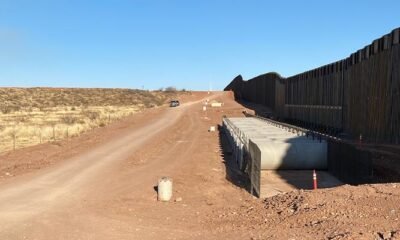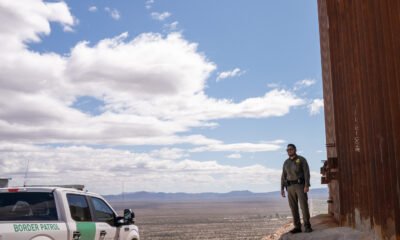border
Binational ‘Border Bash’ Shines Spotlight on San Rafael Valley Amid DHS Wall Plans

As the Trump administration announces plans to construct 35 miles of new border barriers, environmentalists gathered last weekend in Lochiel, Arizona, to oppose the project during a bi-national event. The gathering celebrated local culture and unity, featuring music and food under the shade of old cottonwood trees.
Residents from both sides of the border converged to voice their discontent over the proposed construction through the San Rafael Valley—a critical grassland ecosystem. Many are concerned that this new barrier will isolate protected habitats in an area that is currently barrier-free.
In April, U.S. Customs and Border Protection (CBP) revealed plans for 24.7 miles of new border wall. Recently, Homeland Security Secretary Kristi Noem accelerated this initiative, waiving numerous environmental laws to facilitate the construction of a much larger section. The new plans include two segments, one extending from Border Monument 121 to Monument 117, and another from Border Monument 99 for approximately 33.4 miles.
Noem justified the decision by citing an “acute and immediate need” for barriers to deter illegal entries. Earlier this week, she also announced similar waivers for a project in the Yuma Sector, indicating a broader push for enhanced border security.
Myles Traphagen from Wildlands Network criticized the federal mapping and planning efforts, noting that the new sections will create the longest unbroken stretch of the wall along the U.S.-Mexico border. He emphasized that these barriers would severely impede wildlife movement, particularly for species like jaguars and ocelots.
Environmental advocates like Laiken Jordahl and Russ McSpadden have condemned the initiative, arguing that it endangers local wildlife while border apprehensions have dropped significantly. Data shows a 93 percent decrease in encounters along the border, leading critics to question the need for such extensive barriers.
Amid this backdrop, a gathering in Lochiel highlighted the interconnectedness of communities across the border. Attendees exchanged food and stories while appreciating the area’s biodiversity. As they moved along the border fence, they expressed their concerns about the wall’s imminent impact on both human and wildlife movement.
Local residents like Zach Palma lamented the wall’s divisive nature, emphasizing its historical significance and cultural ramifications. The San Rafael Valley is not only a wildlife corridor but also a crucial habitat for various species, including migrating animals and native flora.
Despite previous efforts to prevent similar constructions, advocates remain determined. The Sierra Club and other organizations are now focused on negotiating modifications that could mitigate some of the environmental impacts, including provisions for wildlife crossings.
The effects of a border wall extend beyond immediate construction, as experts warn that it could disrupt long-standing ecological balances. Erik Meza from the Sierra Club underscored the importance of preserving these migratory paths, calling it an unregulated experiment with unknown consequences.
As the event concluded, attendees showcased handmade birds to symbolize hope and unity, sharing laughter while navigating the boundaries that are physically and politically imposed. Despite the challenges posed by border policies, the spirit of community endures, reflecting deep historical ties and a shared commitment to protecting their environment.


















